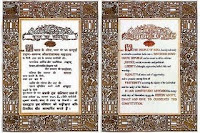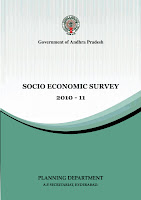skip to main |
skip to sidebar
Cyclones are caused by atmospheric disturbances around a low-pressure area distinguished by swift and often destructive air circulation. They are usually accompanied by violent storms and bad weather. The air circulates inward in an anticlockwise direction in the northern hemisphere and clockwise in the southern hemisphere. Cyclones are classified as: (i) extra tropical cyclones (also called temperate cyclones); and (ii) tropical cyclones.
The World Meteorological Organisation (WMO, 1976) uses the term ‘tropical cyclone’ to cover weather systems in which winds exceed ‘gale force’ (minimum of 34 knots or 63 Kph). Tropical cyclones are the progeny of ocean and atmosphere, powered by the heat from the sea, driven by the easterly trades and temperate westerlies, the high planetary winds and their own fierce energy. In India, cyclones are classified due to the:
2
:
Earthquakes
Earthquakes have caused huge damage to life and property worldwide and pose a significant threat to India also because of falling of almost 59% of its geographical area in earthquake vulnerable zones. The most clearly observable impacts of an earthquake are the loss of human lives and property, economic & social losses and environmental degradation. Over the last century, about 75% of fatalities attributed to earthquakes have been caused by the collapse of buildings. A great number of victims die in the collapse of non-engineered weak masonry buildings, which make up a large proportion in India’s existing building stock. India’s substantial percentage of population of earthquake vulnerable zones continue to live in these structures due to absence of knowledge in earthquake resistant construction & retrofitting techniques at the grassroots and non-compliance of appropriate building regulations and town planning legislations for earthquake safe guided physical development in towns. Besides, ignorance of basic tips of earthquake survivability in the mindset of common people during shaking of earth increases the casualty in many folds. Further, least expertise by rescuers in search & rescue in collapse buildings and no knowledge of first-aid technique for earthquake victims make the situation worst during any post earthquake scenario.
The above issues justify for launching of nationwide mass awareness generation activities as a foundation layer of earthquake preparedness in the country.
In the absence of any early warning possibility of any earthquake, awareness generation strategy for seismic risk reduction in the country would have no option but to concentrate more on earthquake resistant construction techniques, appropriate techno-legal regime (building regulations/acts), basic survivability tips during shaking of ground.
During 2002-2009 a national initiative namely Disaster Risk Management Programme was implemented in collaboration with State Governments by Government of India and UNDP under a multi-donor resource framework to reduce vulnerabilities of communities in some of the most hazard prone districts of India. Under the programme, several resource materials were prepared and widely circulated for disaster risk management. We are here posting several of such resource materials that will contribute the communities, civil societies, policy/decision makers, city managers for better preparedness and earthquake risk mitigation in the countries.
Labels: DISASTER MANAGEMENT
FLOODS
Floods are the most frequent natural calamity that India has to face almost every year in varying magnitudes in some or other parts of the country. The annual precipitation including snow-fall is estimated at 4000 Billion Cubic Metre (BCM). Out of this, the seasonal rainfall in monsoon is of the order of 3000 BCM. Rainfall in India is mainly dependent on the South-West and North-East monsoons, on cyclonic depressions and disturbances and on violent local storms. Most of the rainfall in India (80%) takes place under the influence of South-West monsoon between June and September (4 months). Remaining (20%) rainfall is received from North-east monsoon, cyclonic storm, local storms and cloud bursts. Flooding is caused by the inadequate capacity within the banks of the rivers to contain the high flows brought down from the upper catchment due to heavy rainfall. Areas having poor drainage characteristic get flooded by accumulation of water from heavy rainfall. According to the estimate of the National Commission on Flood, the area prone to floods in the country was of the order of 40 million hectares, out of which it is considered that 80%, i.e., 32 million hectares could be provided with reasonable degree of protection.
Labels: DISASTER MANAGEMENT
Cyclones
- Strength of the associated winds,
- Storm surge and
- Exceptional rainfall occurrences.
Map
Copyright © 2011 APPSC MATERIALS. All Rights Reserved.
Magazine Basic theme designed by Themes by bavotasan.com. Bloggerized by Free Blogger Template.
Powered by Blogger.
Magazine Basic theme designed by Themes by bavotasan.com. Bloggerized by Free Blogger Template.
Powered by Blogger.


















































